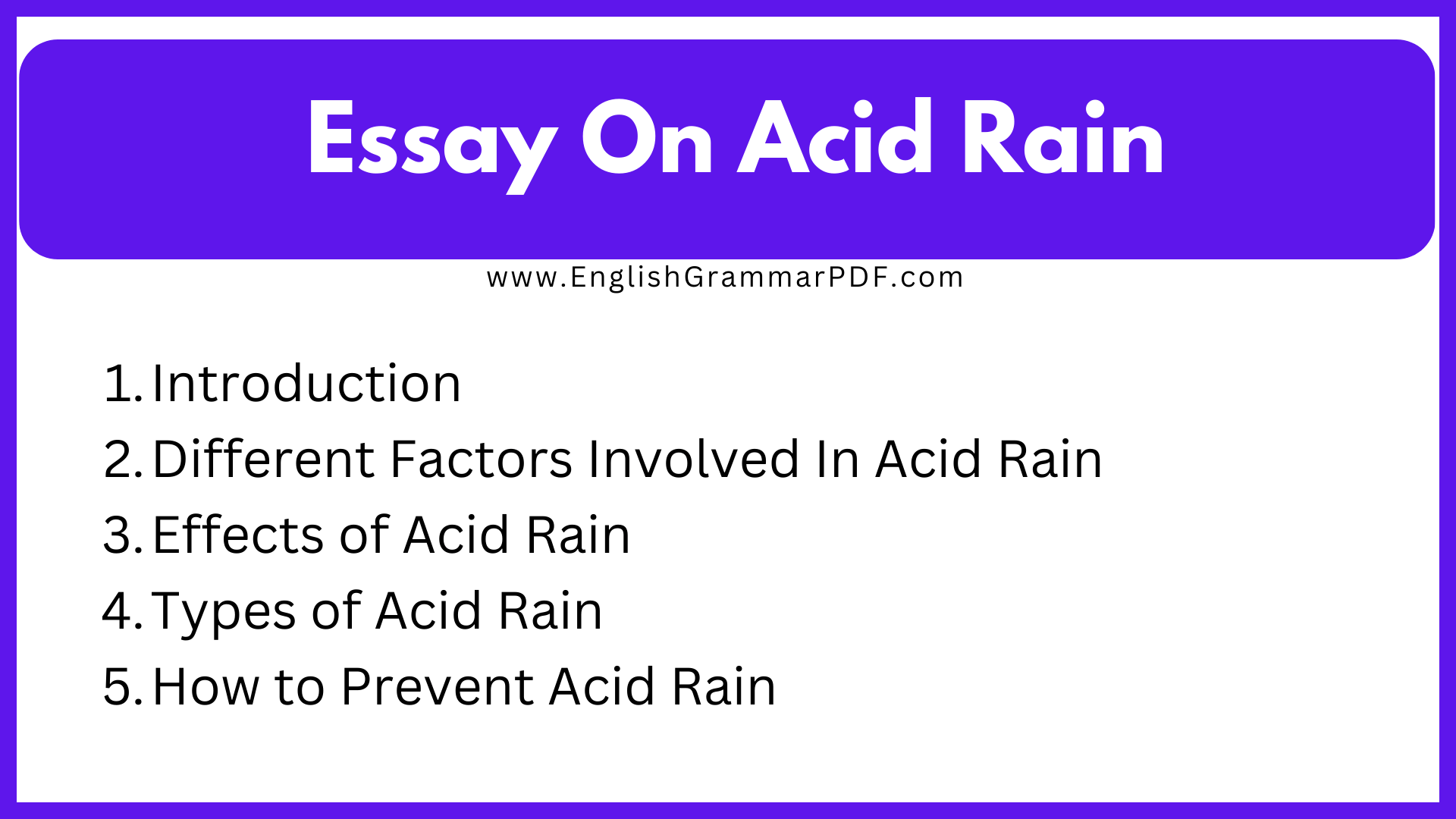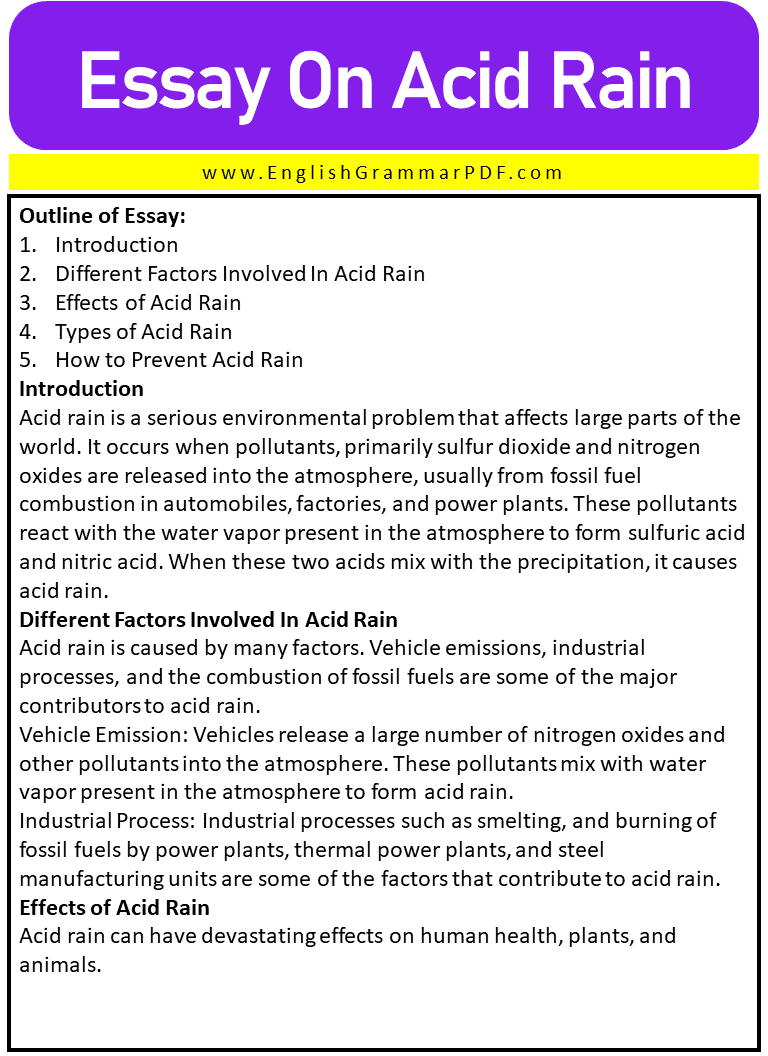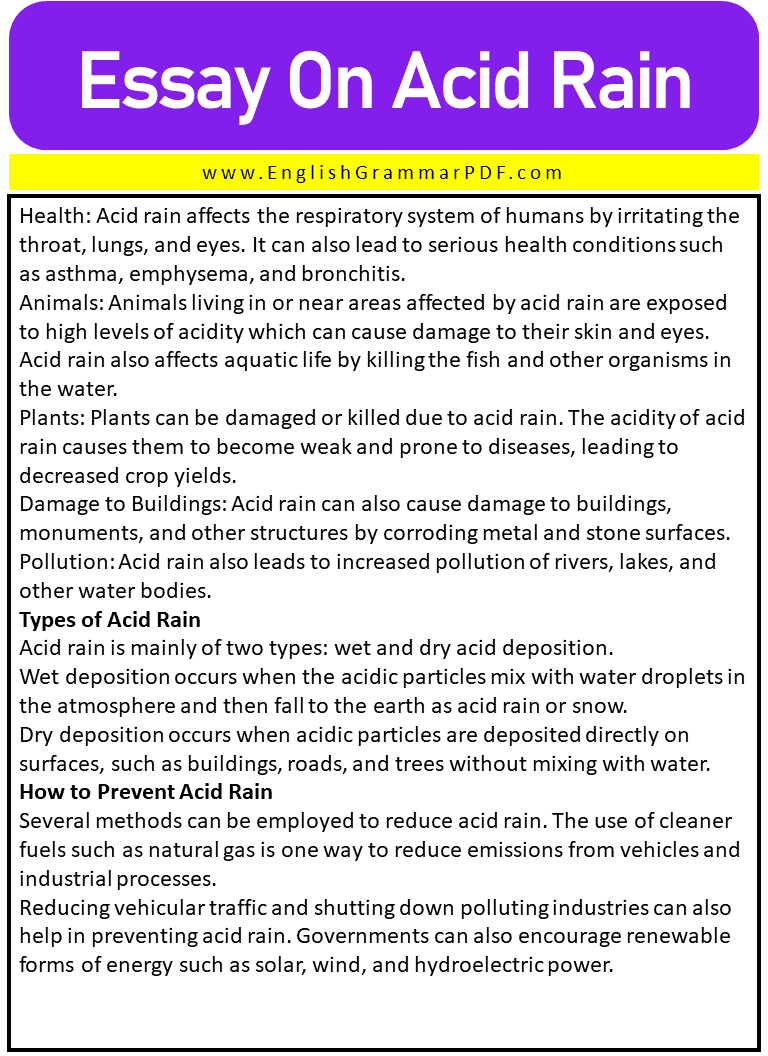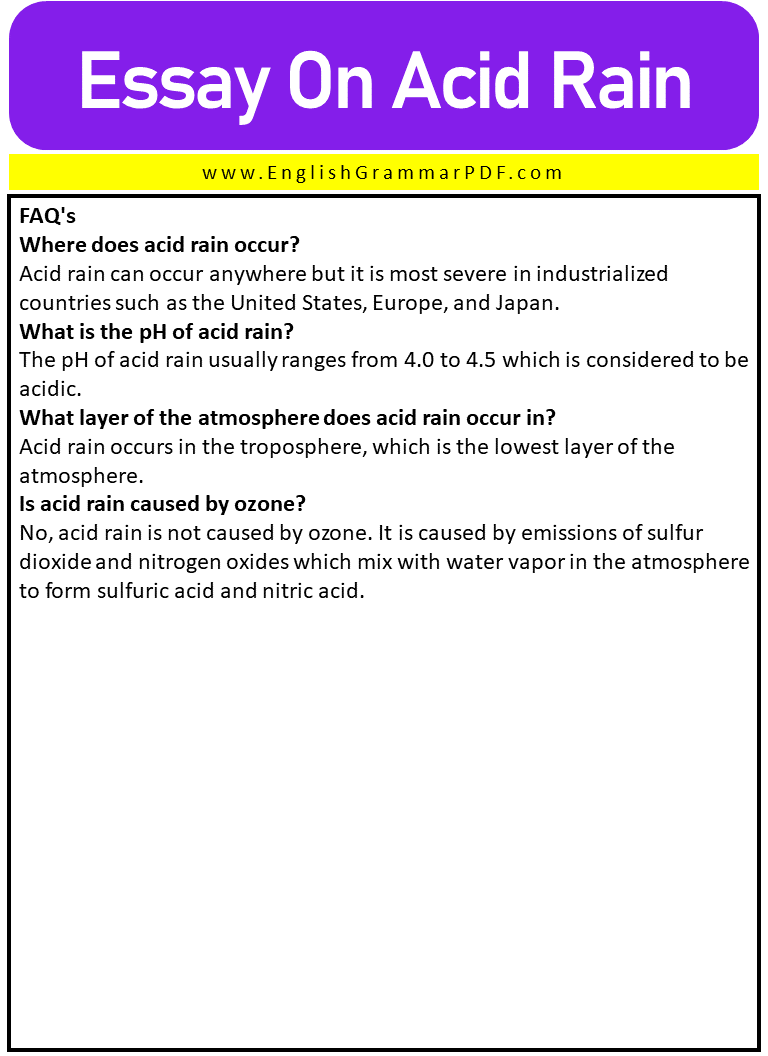Essay On Acid Rain
Outline of Essay:
- Introduction
- Different Factors Involved In Acid Rain
- Effects of Acid Rain
- Types of Acid Rain
- How to Prevent Acid Rain
- FAQ’s
Introduction
Acid rain is a serious environmental problem that affects large parts of the world. It occurs when pollutants, primarily sulfur dioxide and nitrogen oxides are released into the atmosphere, usually from fossil fuel combustion in automobiles, factories, and power plants. These pollutants react with the water vapor present in the atmosphere to form sulfuric acid and nitric acid. When these two acids mix with the precipitation, it causes acid rain.
Different Factors Involved In Acid Rain
Acid rain is caused by many factors. Vehicle emissions, industrial processes, and the combustion of fossil fuels are some of the major contributors to acid rain.
Vehicle Emission: Vehicles release a large number of nitrogen oxides and other pollutants into the atmosphere. These pollutants mix with water vapor present in the atmosphere to form acid rain.
Industrial Process: Industrial processes such as smelting, and burning of fossil fuels by power plants, thermal power plants, and steel manufacturing units are some of the factors that contribute to acid rain.
Effects of Acid Rain
Acid rain can have devastating effects on human health, plants, and animals.
Health: Acid rain affects the respiratory system of humans by irritating the throat, lungs, and eyes. It can also lead to serious health conditions such as asthma, emphysema, and bronchitis.
Animals: Animals living in or near areas affected by acid rain are exposed to high levels of acidity which can cause damage to their skin and eyes. Acid rain also affects aquatic life by killing the fish and other organisms in the water.
Plants: Plants can be damaged or killed due to acid rain. The acidity of acid rain causes them to become weak and prone to diseases, leading to decreased crop yields.
Damage to Buildings: Acid rain can also cause damage to buildings, monuments, and other structures by corroding metal and stone surfaces.
Pollution: Acid rain also leads to increased pollution of rivers, lakes, and other water bodies.
Types of Acid Rain
Acid rain is mainly of two types: wet and dry acid deposition.
Wet deposition occurs when the acidic particles mix with water droplets in the atmosphere and then fall to the earth as acid rain or snow.
Dry deposition occurs when acidic particles are deposited directly on surfaces, such as buildings, roads, and trees without mixing with water.
How to Prevent Acid Rain
Several methods can be employed to reduce acid rain. The use of cleaner fuels such as natural gas is one way to reduce emissions from vehicles and industrial processes.
Reducing vehicular traffic and shutting down polluting industries can also help in preventing acid rain. Governments can also encourage renewable forms of energy such as solar, wind, and hydroelectric power.
FAQ’s
Where does acid rain occur?
Acid rain can occur anywhere but it is most severe in industrialized countries such as the United States, Europe, and Japan.
What is the pH of acid rain?
The pH of acid rain usually ranges from 4.0 to 4.5 which is considered to be acidic.
What layer of the atmosphere does acid rain occur in?
Acid rain occurs in the troposphere, which is the lowest layer of the atmosphere.
Is acid rain caused by ozone?
No, acid rain is not caused by ozone. It is caused by emissions of sulfur dioxide and nitrogen oxides which mix with water vapor in the atmosphere to form sulfuric acid and nitric acid.
Download the Pdf of the Essay On Acid Rain




Read More Essays:


